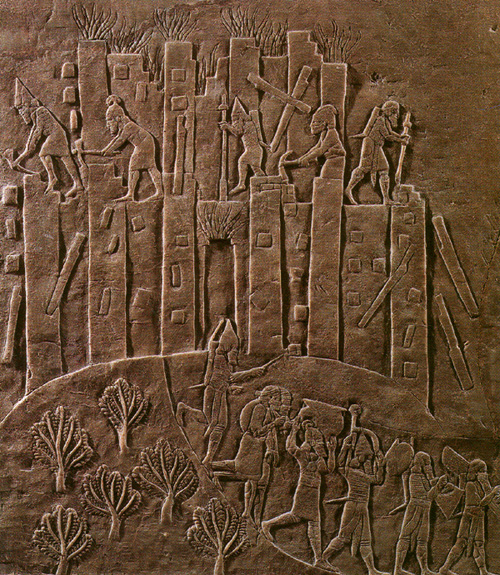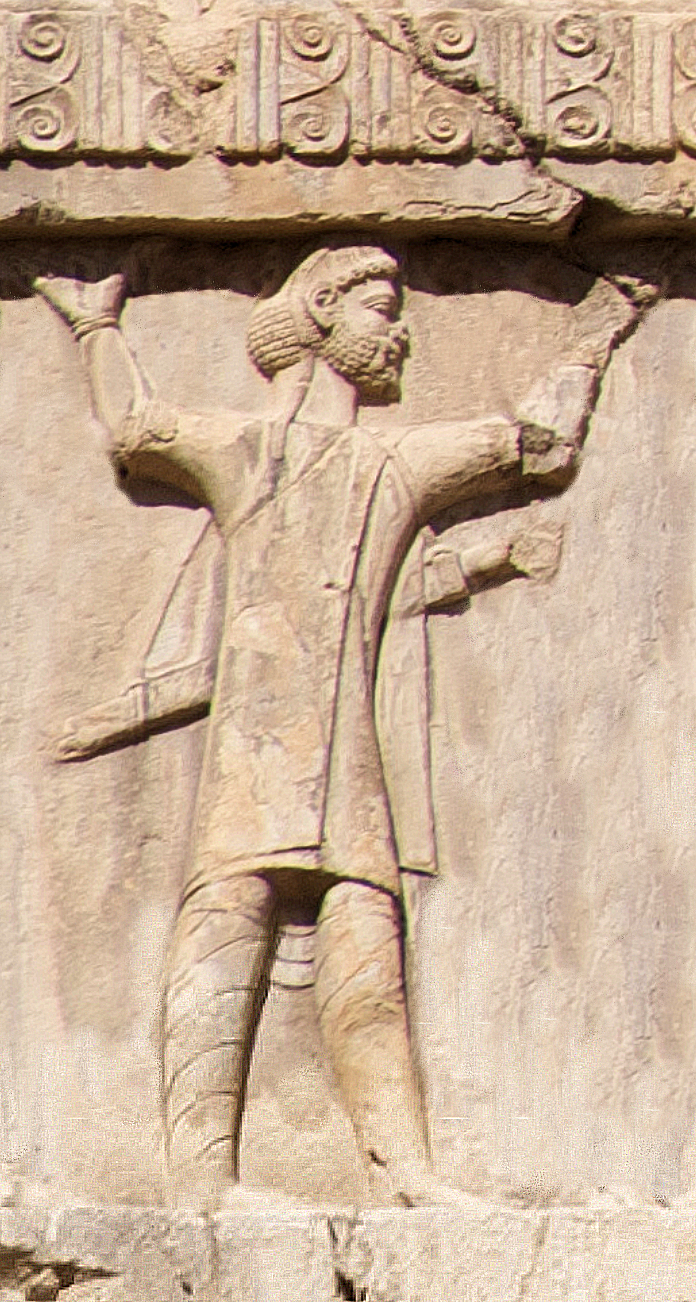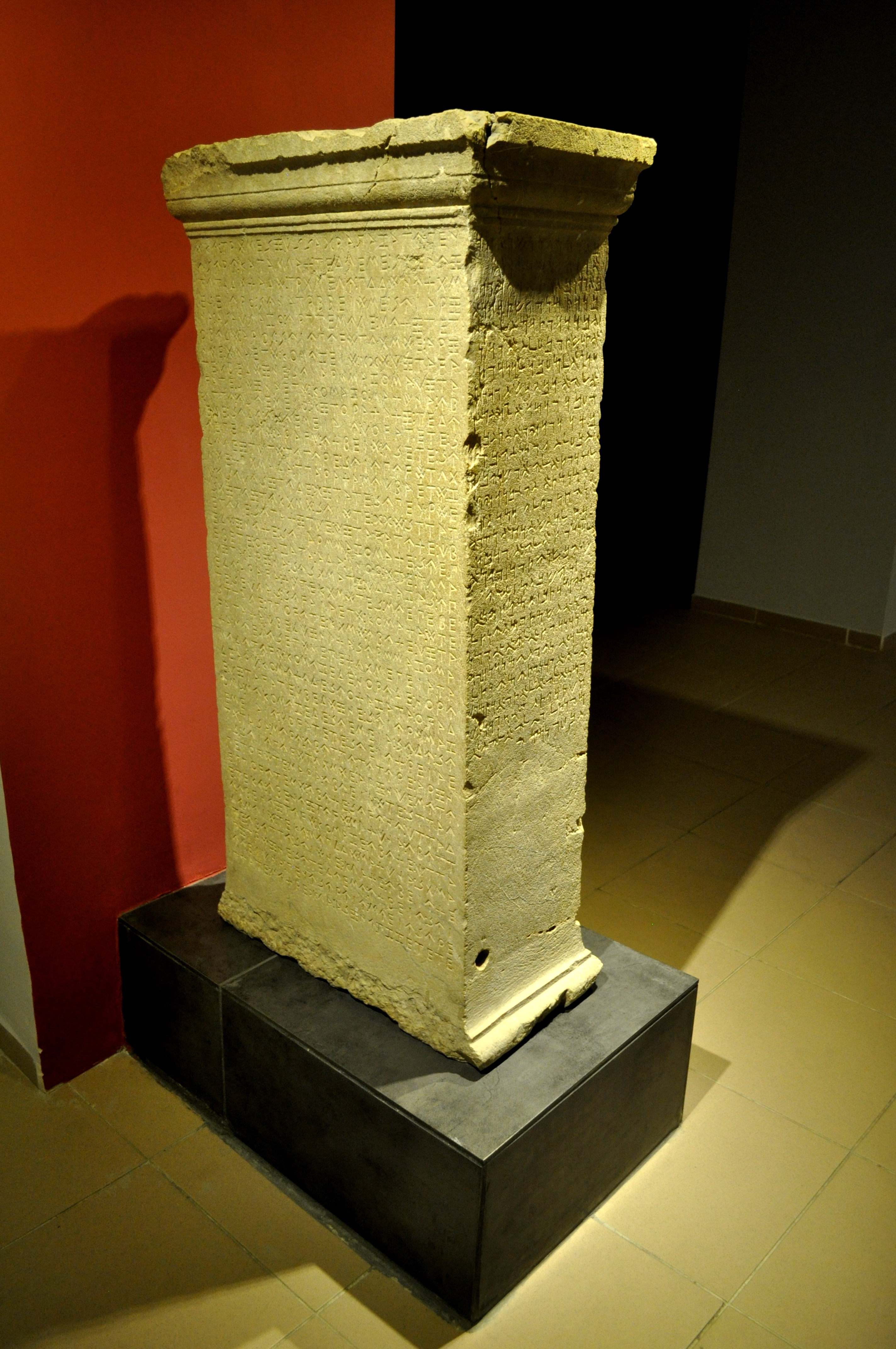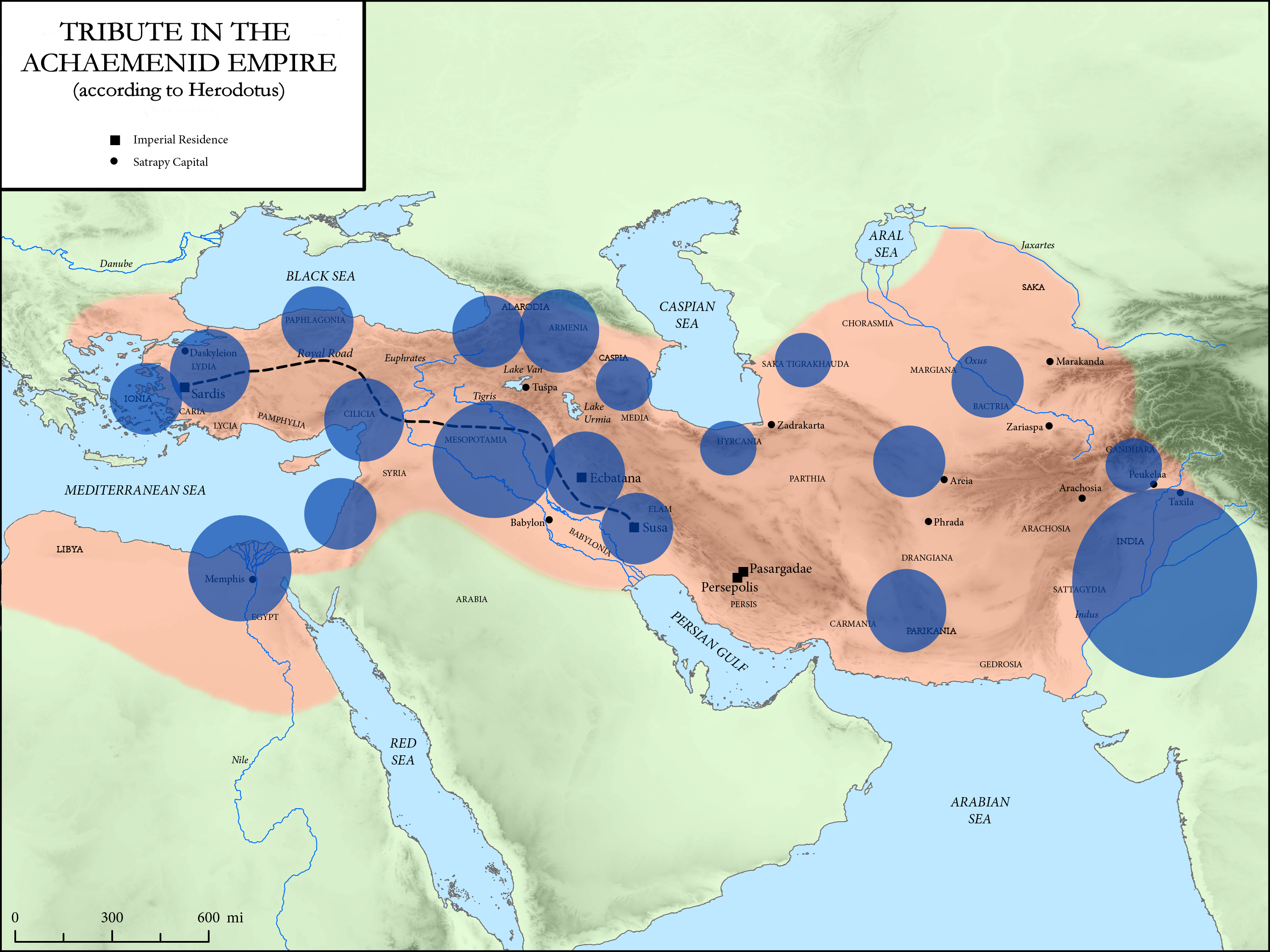|
Achaemenid Assyria
Athura ( peo, 𐎠𐎰𐎢𐎼𐎠 ''Aθurā''), also called Assyria, was a geographical area within the Achaemenid Empire in Upper Mesopotamia from 539 to 330 BC as a military protectorate state. Although sometimes regarded as a satrapy, Achaemenid royal inscriptions list it as a ''dahyu'' (plural ''dahyāva''), a concept generally interpreted as meaning either a group of people or both a country and its people, without any administrative implication. It mostly incorporated the territories of Neo-Assyrian Empire corresponding to what is now northern Iraq in the upper Tigris, the middle and upper Euphrates, parts of modern-day northwestern Iran, modern-day northeastern Syria (Eber-Nari) and part of southeast Anatolia (now Turkey). However, Egypt and the Sinai Peninsula were separate Achaemenid territories. The Neo-Assyrian Empire collapsed after a period of violent civil wars, followed by an invasion by a coalition of some of its former subject peoples, the Iranian peoples (Me ... [...More Info...] [...Related Items...] OR: [Wikipedia] [Google] [Baidu] |
Medes
The Medes (Old Persian: ; Akkadian: , ; Ancient Greek: ; Latin: ) were an ancient Iranian people who spoke the Median language and who inhabited an area known as Media between western and northern Iran. Around the 11th century BC, they occupied the mountainous region of northwestern Iran and the northeastern and eastern region of Mesopotamia located in the region of Hamadan (Ecbatana). Their consolidation in Iran is believed to have occurred during the 8th century BC. In the 7th century BC, all of western Iran and some other territories were under Median rule, but their precise geographic extent remains unknown. Although they are generally recognized as having an important place in the history of the ancient Near East, the Medes have left no written source to reconstruct their history, which is known only from foreign sources such as the Assyrians, Babylonians, Armenians and Greeks, as well as a few Iranian archaeological sites, which are believed to have been occupied ... [...More Info...] [...Related Items...] OR: [Wikipedia] [Google] [Baidu] |
Lydians
The Lydians (known as ''Sparda'' to the Achaemenids, Old Persian cuneiform Wikt:𐎿𐎱𐎼𐎭, 𐎿𐎱𐎼𐎭) were Anatolians, Anatolian people living in Lydia, a region in western Anatolia, who spoke the distinctive Lydian language, an Indo-European languages, Indo-European language of the Anatolian languages, Anatolian group. Questions raised regarding their origins, as defined by the language and reaching well into the 2nd millennium BC, continue to be debated by language historians and archeologists. A distinct Lydian culture lasted, in all probability, until at least shortly before the Common Era, having been attested the last time among extant records by Strabo in Kibyra in south-west Anatolia around his time (1st century BC). The Lydian capital was at ''Sfard'' or Sardis. Their recorded history of statehood, which covers three dynasties traceable to the Late Bronze Age, reached the height of its power and achievements during the 7th and 6th centuries BC, a time wh ... [...More Info...] [...Related Items...] OR: [Wikipedia] [Google] [Baidu] |
Old Aramaic
Old Aramaic refers to the earliest stage of the Aramaic language, known from the Aramaic inscriptions discovered since the 19th century. Emerging as the language of the city-states of the Arameans in the Levant in the Early Iron Age, Old Aramaic was adopted as a ''lingua franca'', and in this role was inherited for official use by the Achaemenid Empire during classical antiquity. After the fall of the Achaemenid Empire, local vernaculars became increasingly prominent, fanning the divergence of an Aramaic dialect continuum and the development of differing written standards. The language is considered to have given way to Middle Aramaic by the 3rd century (a conventional date is the rise of the Sasanian Empire in 224 AD). Ancient Aramaic "Ancient Aramaic" refers to the earliest known period of the language, from its origin until it becomes the ''lingua franca'' of the Fertile Crescent and Bahrain. It was the language of the Aramaean city-states of Damascus, Hamath and Arpad. Di ... [...More Info...] [...Related Items...] OR: [Wikipedia] [Google] [Baidu] |
Rebellion
Rebellion, uprising, or insurrection is a refusal of obedience or order. It refers to the open resistance against the orders of an established authority. A rebellion originates from a sentiment of indignation and disapproval of a situation and then manifests itself by the refusal to submit or to obey the authority responsible for this situation. Rebellion can be individual or collective, peaceful ( civil disobedience, civil resistance, and nonviolent resistance) or violent (terrorism, sabotage and guerrilla warfare). In political terms, rebellion and revolt are often distinguished by their different aims. While rebellion generally seeks to evade and/or gain concessions from an oppressive power, a revolt seeks to overthrow and destroy that power, as well as its accompanying laws. The goal of rebellion is resistance while a revolt seeks a revolution. As power shifts relative to the external adversary, or power shifts within a mixed coalition, or positions harden or soften on ei ... [...More Info...] [...Related Items...] OR: [Wikipedia] [Google] [Baidu] |
Districts Of The Achaemenid Empire
Herodotus divided the Achaemenid Empire into 20 districts for the purpose of tribute payments. The following is a description of the ethnic makeup of the districts and the amount they paid in taxes, translated from Herodotus' '' Histories''. Accounting units The quantities of silver are given in Babylonian talent (1 Babylonian talent = about 30.3 kg), while the quantities of gold (India only) are given in Euboïc/Euboean talent (1 Euboïc talent = about 26 kg). Only the Hindush paid in gold, the exchange rate of gold to silver being 1 to 13 by weight at the time of Herodotus. Tax districts The order of the districts given here follows Herodotus, ''Histories'', III.90–94. In hellenocentric way it starts with Ionia and Mysia. The official Persian order of the provinces, as devised under Darius I in 518 BCE, was different and started from the Empire's capital: 1. Media, 2. Susa, etc.Hermann Bengtson, Vladimir Milojčić (ed.), ''Grosser Historischer Weltatlas'', Erster T ... [...More Info...] [...Related Items...] OR: [Wikipedia] [Google] [Baidu] |
Herodotus
Herodotus ( ; grc, , }; BC) was an ancient Greek historian and geographer from the Greek city of Halicarnassus, part of the Persian Empire (now Bodrum, Turkey) and a later citizen of Thurii in modern Calabria ( Italy). He is known for having written the '' Histories'' – a detailed account of the Greco-Persian Wars. Herodotus was the first writer to perform systematic investigation of historical events. He is referred to as " The Father of History", a title conferred on him by the ancient Roman orator Cicero. The ''Histories'' primarily cover the lives of prominent kings and famous battles such as Marathon, Thermopylae, Artemisium, Salamis, Plataea, and Mycale. His work deviates from the main topics to provide a cultural, ethnographical, geographical, and historiographical background that forms an essential part of the narrative and provides readers with a wellspring of additional information. Herodotus has been criticized for his inclusion of "legends and f ... [...More Info...] [...Related Items...] OR: [Wikipedia] [Google] [Baidu] |
Media (Persian Province)
The Medes (Old Persian: ; Akkadian: , ; Ancient Greek: ; Latin: ) were an ancient Iranian people who spoke the Median language and who inhabited an area known as Media between western and northern Iran. Around the 11th century BC, they occupied the mountainous region of northwestern Iran and the northeastern and eastern region of Mesopotamia located in the region of Hamadan (Ecbatana). Their consolidation in Iran is believed to have occurred during the 8th century BC. In the 7th century BC, all of western Iran and some other territories were under Median rule, but their precise geographic extent remains unknown. Although they are generally recognized as having an important place in the history of the ancient Near East, the Medes have left no written source to reconstruct their history, which is known only from foreign sources such as the Assyrians, Babylonians, Armenians and Greeks, as well as a few Iranian archaeological sites, which are believed to have been occupied ... [...More Info...] [...Related Items...] OR: [Wikipedia] [Google] [Baidu] |
Neo-Babylonian Empire
The Neo-Babylonian Empire or Second Babylonian Empire, historically known as the Chaldean Empire, was the last polity ruled by monarchs native to Mesopotamia. Beginning with the coronation of Nabopolassar as the List of kings of Babylon, King of Babylon in 626 BC and being firmly established through the fall of the Neo-Assyrian Empire in 612 BC, the Neo-Babylonian Empire was conquered by the Achaemenid Empire, Achaemenid Persian Empire in 539 BC, marking the collapse of the Chaldean dynasty less than a century after its founding. The defeat of the Neo-Assyrian Empire and subsequent transfer of power to Babylon marked the first time that the city, and Lower Mesopotamia, southern Mesopotamia in general, had risen to dominate the ancient Near East since the collapse of the Old Babylonian Empire (under Hammurabi) nearly a thousand years earlier. The period of Neo-Babylonian rule thus saw unprecedented economic and population growth throughout Babylonia, as well as a renaissance of cult ... [...More Info...] [...Related Items...] OR: [Wikipedia] [Google] [Baidu] |
Median Empire
The Medes (Old Persian: ; Akkadian: , ; Ancient Greek: ; Latin: ) were an ancient Iranian people who spoke the Median language and who inhabited an area known as Media between western and northern Iran. Around the 11th century BC, they occupied the mountainous region of northwestern Iran and the northeastern and eastern region of Mesopotamia located in the region of Hamadan (Ecbatana). Their consolidation in Iran is believed to have occurred during the 8th century BC. In the 7th century BC, all of western Iran and some other territories were under Median rule, but their precise geographic extent remains unknown. Although they are generally recognized as having an important place in the history of the ancient Near East, the Medes have left no written source to reconstruct their history, which is known only from foreign sources such as the Assyrians, Babylonians, Armenians and Greeks, as well as a few Iranian archaeological sites, which are believed to have been occupied ... [...More Info...] [...Related Items...] OR: [Wikipedia] [Google] [Baidu] |
Battle Of Nineveh (612 BCE)
The Battle of Nineveh is conventionally dated between 613 and 611 BC, with 612 BC being the most supported date. Rebelling against the Assyrians, an allied army which combined the forces of Medes and the Babylonians, besieged Nineveh and sacked 750 hectares of what was, at that time, one of the greatest cities in the world. The fall of Nineveh led to the destruction of the Neo-Assyrian Empire over the next three years as the dominant state in the Ancient Near East. Archeological records show that the capital of the once mighty Assyrian Empire was extensively de-urbanized and depopulated in the decades and centuries following the battle. A garbled account of the fall of the city later led to the story of the legendary king Sardanapalus. Babylon became the imperial center of Mesopotamia for the first time in over a thousand years, leading to the Neo-Babylonian Empire, claiming imperial continuity as a new dynasty. Background The Neo-Assyrian Empire emerged in the 10th century ... [...More Info...] [...Related Items...] OR: [Wikipedia] [Google] [Baidu] |
Cimmerians
The Cimmerians (Akkadian: , romanized: ; Hebrew: , romanized: ; Ancient Greek: , romanized: ; Latin: ) were an ancient Eastern Iranian equestrian nomadic people originating in the Caspian steppe, part of whom subsequently migrated into West Asia. Although the Cimmerians were culturally Scythian, they formed an ethnic unit separate from the Scythians proper, to whom the Cimmerians were related and who displaced and replaced the Cimmerians.: "As the Cimmerians cannot be differentiated archeologically from the Scythians, it is possible to speculate about their Iranian origins. In the Neo-Babylonian texts (according to D’yakonov, including at least some of the Assyrian texts in Babylonian dialect) and similar forms designate the Scythians and Central Asian Saka, reflecting the perception among inhabitants of Mesopotamia that Cimmerians and Scythians represented a single cultural and economic group" The Cimmerians themselves left no written records, and most information about t ... [...More Info...] [...Related Items...] OR: [Wikipedia] [Google] [Baidu] |





.jpg)